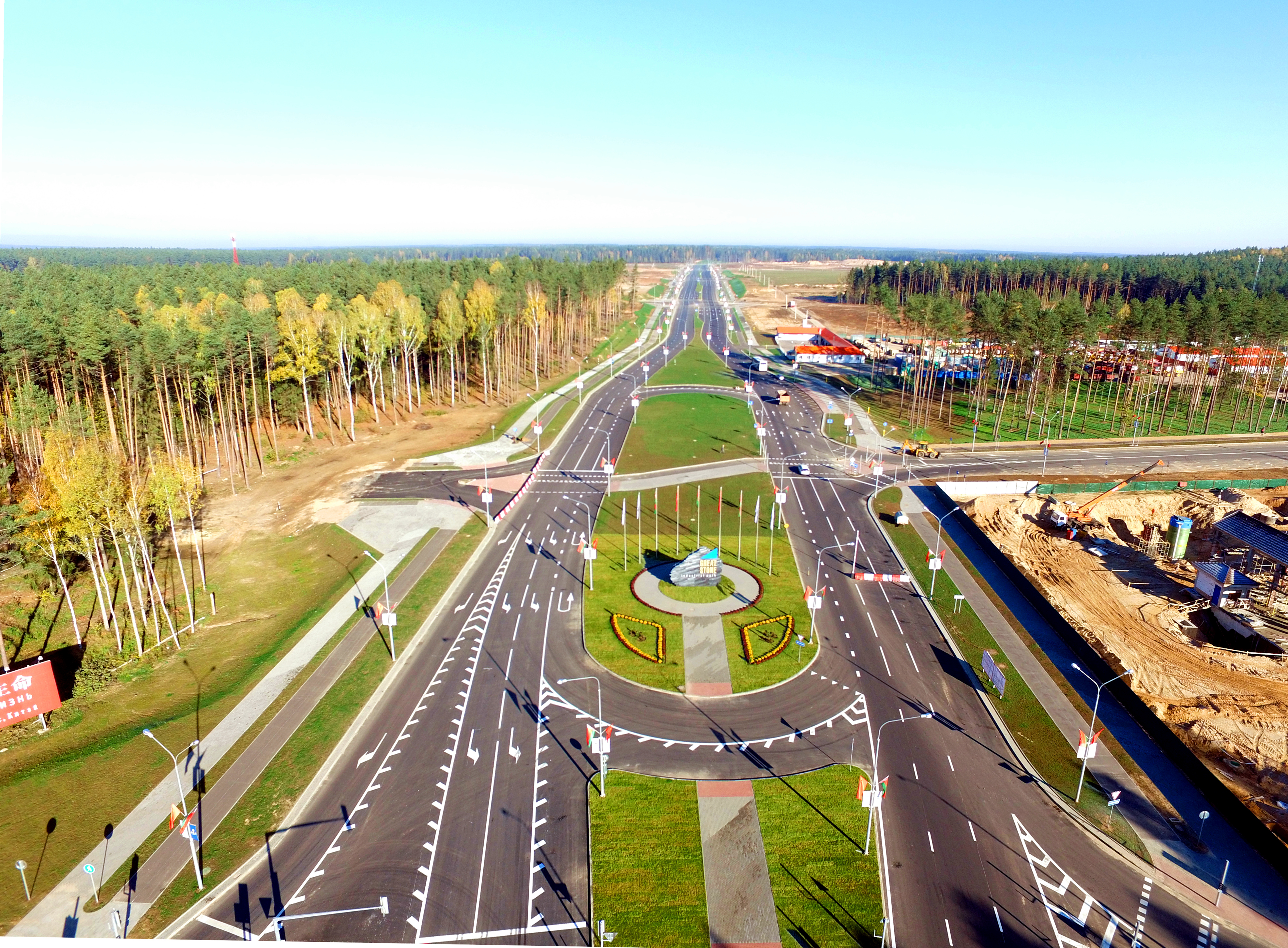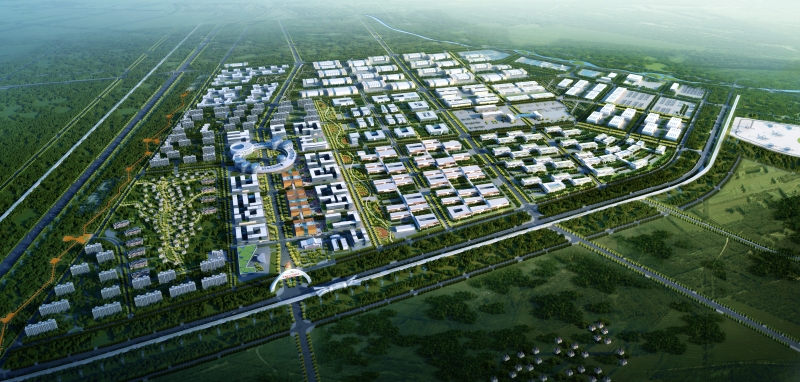According to the EU statistics, China and Europe now trade well over €1 billion a day. The Asian giant is the EU’s second trading partner behind the United States and the EU is China’s biggest trading partner. At the same time the country accounts for a mere two or three per cent of overall European investments abroad. Why? Perhaps because some European investors are concerned about starting their own operations in China.
Ansgar Rudolph, project manager at InSite Bavaria, a German competence centre for industrial site development that is owned by the Technical University of Munich, says that instead of investing in a production plant in China, companies from Europe can have Chinese partners in Belarus.
“I see great opportunities for European companies to be closer to China; to be the neighbour of a Chinese company without facing the biggest disadvantages of operating a plant in China. The Great Stone [Industrial Park, located on the outskirts of Minsk] is the first transnational industrial area that provides a common ground for European and Chinese companies and that implements common standards for the two business worlds,” he says.
“It is predicted that by 2030, nearly 66 per cent of the world’s middle class will live in China,” says Freddy Opsomer, Chairman of the Board of Directors at the Free Economic Zone in Kaunas, Lithuania. “That opens enormous prospects for the export of European goods to China but there are also new markets in India, Pakistan, Iran and Kazakhstan,” he adds.
Between the East and the West
Dmitry Krutoy, First Deputy Minister of Economy, says that Belarus has long been considered a gateway to Europe on the one hand, and to Asia, on the other. “It is located on the largest Trans-European highways as well as trade routes between the West, East, North and South. Because of this beneficial location, as well as the development of the industrial park, not only is Belarus a transfer-territory – as part of the concept of the
Silk Road Economic Belt – but also a destination on its own for goods production, processing, packaging and storage,” he tells Emerging Europe.
Frank Schuhholz, a logistics expert and the founder of FMS Advisers, points to the fact that the park is located close to Minsk airport and a two and a half hour drive from the Belarus-Polish border, which is the eastern border of the European Union.
“The project, which can be described as a large free trade and investment zone, covers an area of over 90 square km and will eventually hold workplaces for roughly 100,000 people. It is intended to attract local, as well as international investors to use this location as a manufacturing, trading and distribution hub which is closely tied to the railway corridor that links Europe and China,” he adds.
“Great Stone is the largest project that has been implemented in Belarus,” says Deputy Minister Krutoy. “It is an eco-city with a modern infrastructure and comfortable living and working conditions. A special management system provides investors with an opportunity to complete all the necessary administration procedures in a one-stop-shop scheme. We have also created conditions that facilitate the implementation of scientific and technical achievements such as a venture investment fund, as well as a centre for commercialisation of scientific research,” Mr Krutoy adds.

Infrastructure in place
“However, in today’s competitive environment, investors have many choices of where to invest and locate their businesses,” says Deborah S. Porte, a Special Economic Zone expert with over 25 years’ experience in the design and development of various types of economic zones, transport and cargo hubs and technology parks. She has worked for governments and international organisations such as the World Bank.
“What makes a SEZ and its associated country attractive to an investor is a transparent and accountable SEZ regime and well managed SEZs where land is readily available on a long-term basis, where power, water and ITC are reliable, and where there is access to a skilled and/or trainable labour pool.
A strategically located, eco-friendly SEZ with a well-integrated logistics platform is the trend of the future,” Ms Porte tells Emerging Europe.
Sergey Vaitekhovsky, Deputy Director General at the Industrial Park Development Company, says the company has invested $300 million in the development of the Park’s infrastructure so far. “Currently, all of the infrastructure, such as main roads, a gas supply network, water intake stations, IT, water treatment facilities and a distributive electro-station have been completed. All contracts can be signed only with us. We now have eight residents registered and we expect 12 more to register by the end of 2017,” Mr Vaitekhovsky adds.
“Great Stone is very attractive for foreign investors from a tax point of view,” says Svetlana A Gritsouk, Tax and Law Director at EY Belarus. “Investors are free from any corporate taxes such as profit tax, land tax, real estate tax, for ten years, and for the following ten years they receive a 50 per cent discount from the existing rates,” she adds.
Mr Vaitekhovsky adds that, because the Park operates as a free customs’ zone, there is no need to pay VAT and customs duties. “Besides the corporate advantages there are several other benefits for attracting foreign labour, such as a rate of income tax for individuals that is fixed and constitutes only nine per cent – that is a third less than in the country, as well as social insurance payment benefits,” he adds.
Belarus – investment-friendly potential for Poland
Kazimierz Zdunowski, Chairman of the Polish-Belarusian Chamber of Commerce and Industry, says that currently there are almost 550 Polish firms, or firms with Polish capital, in Belarus and they perceive it as an investor-friendly country and see growing potential.
“The Polish and Belarusian economies are very well adapted to manufacturing and trade collaboration. They complement one another not compete with one another. They are predestined to make use of their two great advantages: location and neighbourhood,” says Mr Zdunowski.
He adds that the Great Stone Industrial Park is still at an initial stage of development but it already offers great opportunities and Poland and Belarus should make use of all the opportunities to develop their trade and investment.
In 2016, the bilateral trade between the two countries reached $2.5 billion. Poland is now the country’s third biggest trade partner and ninth foreign investor and there’s room for more, especially now, that Belarus’ economy is growing again in 2017.
“Belarus is now ranked fourth across the globe among the countries, which have introduced significant reforms. Within the past ten years, Belarus has climbed up the Doing Business ranking by 92 notches. Significant improvements have been made, such as business start-up conditions, registration of ownership, tax payments, foreign trade, and protection of minority investors, electricity supply connections and insolvency resolution processes,” says Industrial Park’s Mr Vaitekhovsky.
Francis Malige, Managing Director for Eastern Europe and the Caucasus for the European Bank for Reconstruction and Development (EBRD), also points to the benefits from access to the Customs Union market. “Belarus is a good place to invest and to re-export,” he concludes.


Add Comment